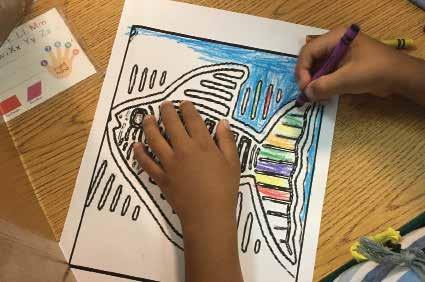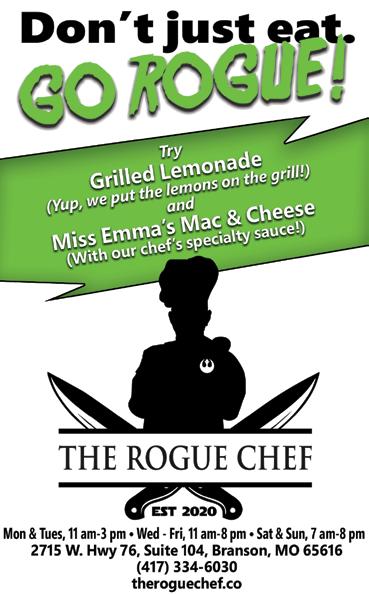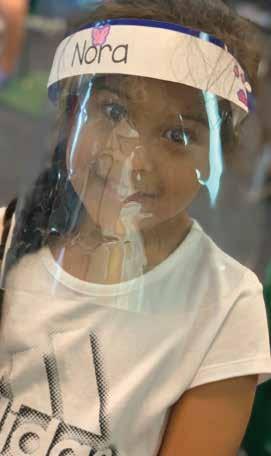
3 minute read
the kids
Hispanic Heritage Month at Hollister Schools
Submitted to Branson Globe
Each year, Americans observe National Hispanic Heritage Month from September 15 to October 15, by celebrating the histories, cultures, contributions, and influence of Hispanic Americans to the history, culture, and achievements of the United States.
With the Hispanic student population in the Hollister R-V School District having grown to nearly 10% of the district’s students, Hollister’s ESL (English as a Second Language) Coordinator, Marta Nangle, feels it is important to observe Hispanic Heritage Month and to educate all students about the contributions and influences of Hispanic Americans.
Last week, Mrs. Nangle visited Hollister ECC and spent time in Mrs. Ortega’s kindergarten classroom, reading to students and teaching them about Hispanic culture. She used the book, “I’m New Here” to help students understand that though we may speak differently, look different, and do things differently, we are all still the same on the inside. She shared with them about children in Panama learning to how to sew molas (a handmade textile that forms part of the traditional outfit of a Kuna woman) and had students color their own mola.
Mrs. Nangle is planning lessons in other buildings on Hollister’s campus as well, including how to do papel picado (a traditional cut paper folk art found throughout Mexico and the former colonies of Spain).
Kindergarten student Alexa Martinez (Special to Branson Globe)

Mrs. Nangle reads to students in Mrs. Ortega’s kindergarten class. (Special to Branson Globe)


Kindergarten student William Cerritos (Special to Branson Globe)


Kindergarten student Nora Lealiiee (Special to Branson Globe)


• PLANE CRASH
Continued from page 12 The Stone County Sheriff’s Office told Ozarks First that the Missouri Continued from page 13 the drugs prove to be, something still being studied. If a high dose is needed to be effective, it will mean that fewer people can be treated with limited supplies. Regeneron says it has enough doses for approximately 50,000 patients and expects 300,000 available within the next few months. Under a $450 million contract, the federal government has agreed to buy initial supplies of Regeneron’s drug and distribute them at no cost to U.S. patients. Lilly says it expects to have 1 million doses this year of the single antibody that it submitted to FDA. However, the company’s research has focused on a combination of two antibodies to treat COVID-19 patients. Lilly said it expects to have just 50,000 doses of that combo this year.
Full Coverage: Virus Outbreak
Q: What’s the evidence that they work?
A: Lilly and Regeneron have revealed only partial results in news releases; they haven’t been published or vetted by independent scientists. Lilly said Wednesday that its two-antibody combo reduced symptoms, the amount of virus, hospitalizations and ER vis-

Highway Patrol will handle the initial investigation of the crash before federal officials come in to determine the cause
An aircraft that crashed in Stone County burns. (Photo courtesy SSCFPD)
• ANTIBODY
of the crash. its for patients with mild or moderate COVID-19. The results are an interim look at a mid-stage study in which 112 people received the antibodies and 156 got a placebo. The amount of virus was significantly lower 11 days later in those given the drug -- the main goal of the study. About 5.8% of patients given placebo required hospitalization or an emergency room visit versus 0.9% of those given the antibodies. Previously, Regeneron said its drug reduced the amount of virus and symptoms in non-hospitalized patients. The partial results came from the first 275 patients enrolled in ongoing studies.
Q: When might they be available?
A: Eli Lilly and Regeneron have asked the Food and Drug Administration for emergency authorization. During public health emergencies the FDA can speed drugs to market based on a lower standard of evidence than is normally required. Drugmakers need only show that the expected benefits of their therapies outweigh the risks for treating COVID-19. There is no deadline for the FDA to rule on the drugs, but it typically makes decisions on such emergency applications within days or weeks.


